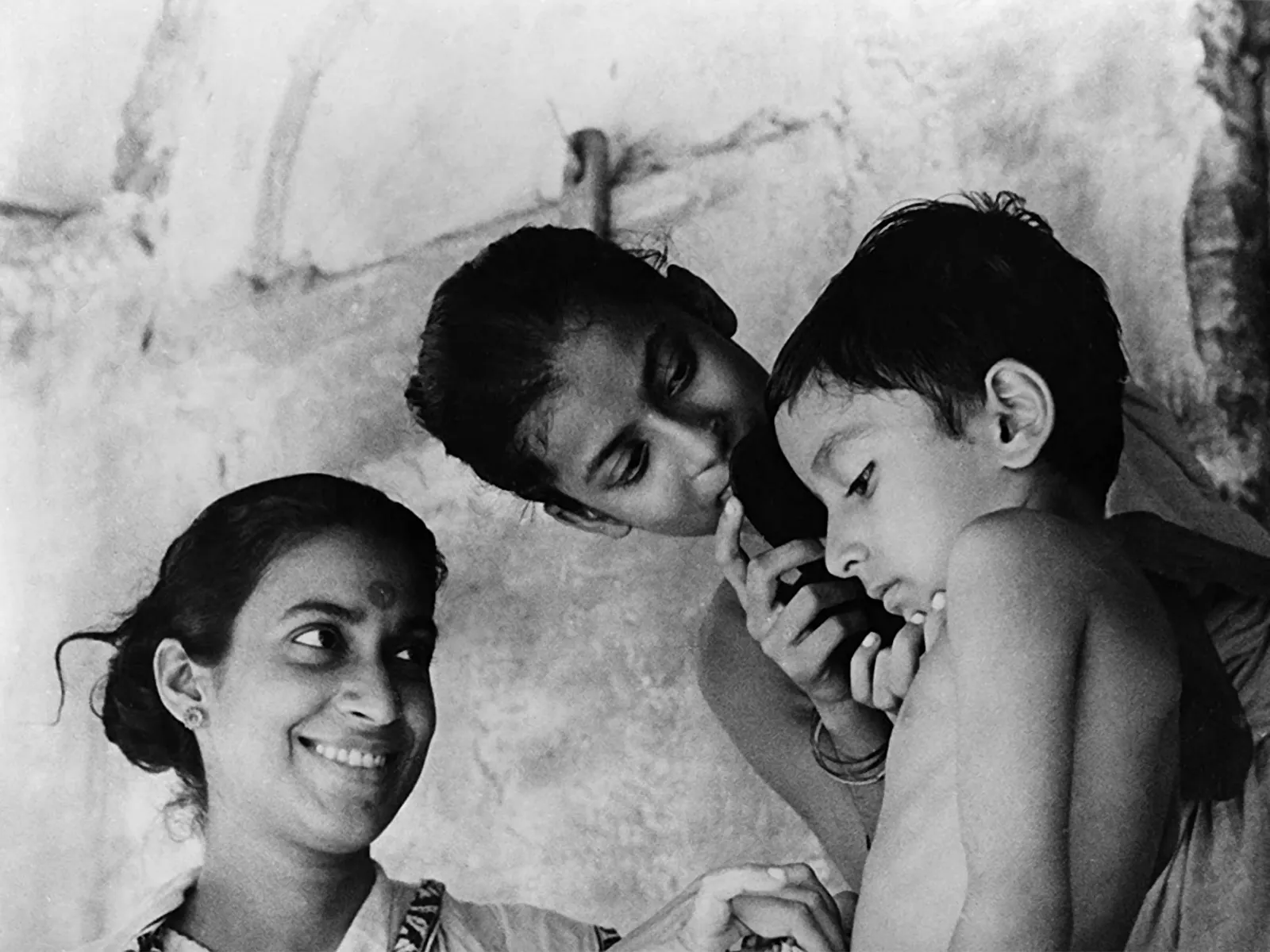Satyajit Ray’s “Pather Panchali” (1955), the first film of the “Apu Trilogy,” is considered as the first exposure to Indian cinema for many Westerners. In the 1950s, the Indian film industry primarily produced melodramatic soap operas, adaptations of myths and legends, action movies, and musicals, which automatically reserved Ray’s films for the cultural elites, feeding the distinctions between mainstream cinema and ‘art films.’ This created a scope for commercial intervention in the future, leading to mass production of popular aesthetic trends.
Mehboob Khan’s “Mother India” (1955) illustrates the popularity of epic melodramas, similar in style to “Gone with the Wind” (1939), in India as opposed to Ray’s “Pather Panchali,” which was poorly received in comparison. ‘Parallel Cinema’ developed as an alternative to commercial Indian cinema in West Bengal in the 1950s. Naturalism, socio-realism, and the lack of song-and-dance sequences made these films intellectually challenging. The main point of difference between Parallel Cinema and mainstream Commercial Cinema was the difference in stylization and representation of content. It must be noted that parallel cinema is not a structured art movement and can be primarily restricted to stylization techniques alone.
Bengal was more cosmopolitan in her outlook than others. Calcutta, the old capital of British India and a major port, more readily embraced Westernization, making her the artistic and intellectual capital of the country. Through Vittorio De Sica’s “Bicycle Thieves” (1948), Ray discovered Neorealism, making it his artistic mode of expression; his films became more European than Indian. As was characteristic of Italian Neorealism, the actors in “Pather Panchali” were largely inexperienced, and the landscape was rural, showing mundane everyday activities, poverty, man-woman dynamics, and crude mannerisms.

The regional dialects adopted by the actors, the artful naturalism in acting, dramatic camera angles, and plays of light and shadow made the film simple yet honest. In his manifesto, Ray talks about the ability of cinema to encapsulate all art forms into one, making it the most powerful. “It combines the cold logic of science with the subtlest abstractions of the human imagination,” he says. “Pather Panchali,” despite being a bildungsroman of Apu, unfolds through his mother, Sarbajaya. Unlike the commonly idealistic mother-son relationships, the “Apu Trilogy” explores rifts and complicated emotions between them.
An unusual aspect of the films is the lack of the typical elongation of a sad scene; the death of Durga, one of the leading characters in the first film, left melancholia in the household. However, the film ended positively with the family’s shift to Benaras to start afresh. The film subtly urges one to appreciate the little joys offered by life rather than being stunted by hardships.
The representation of reality plays a huge role in its perception. Ray’s films, however, were not entirely devoid of drama; orchestrated episodes of joy and sadness, overly choreographed beauty depicted through landscapes (as well as light-and-shadow), and short-lived intense emotions replaced typical melodrama. The refusal to commit to an epiphanic revelation at the end, as was the characteristic feature of Indian films back then, made Ray stand out. Ray’s social outlook and aesthetics influenced several young directors like Wes Anderson and Richard Linklater.
Does Indian reality require unique film aesthetics? I believe it does. One cannot separate a country’s perception of its reality from the way it recorded the past. Chronicling was a colonial construct; Indian history was recorded through storytelling, myths, and legends. Romanticization has been a longstanding part of Indian tradition, creating an audience that enjoys melodrama, action sequences, and pathetic fallacy. Despite the blurring lines between Parallel and Mainstream Cinemas, the one stylization distinction between the two is social critiquing. The interference of the ruling classes to make profits would turn off honest criticism and channel criticisms through filters to produce content that profits them in one way or another, which is not to say that Ray’s cinema did not generate revenue.
Indian reality is a constantly shifting paradigm between the East and the West, sharing ideals from both ends and clamoring for unique film aesthetics to satiate the intellect. Stepping aside from ‘popular culture’ and introspecting through both Indian and Western ideologies produces a more informed Indian reality. Ray said, “What the Indian cinema needs today is not more gloss, but more imagination, more integrity, and a more intelligent appreciation of the limitations of the medium.”






